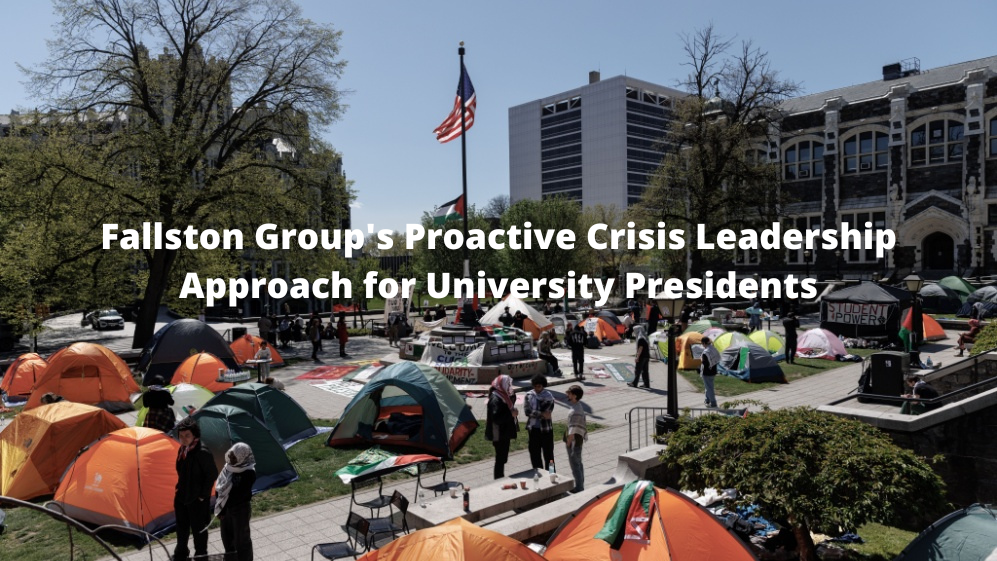Fallston Group’s Proactive Crisis Leadership Approach for University Presidents

As a university president planning for upcoming protests on campus, it’s important to adopt a proactive and strategic approach. Here’s a comprehensive plan that addresses potential challenges while maintaining a commitment to the principles of free expression and campus safety: Develop a Comprehensive Protest Management Plan: Risk Assessment: Conduct a thorough assessment of potential risks and vulnerabilities related to campus protests. Consider factors such as historical issues, current events, and any specific concerns raised by students or faculty. Protocols and Procedures: Establish clear protocols and procedures for managing protests. This should include guidelines for communication, coordination with law enforcement, and handling disruptions. Engage with Stakeholders: Student and Faculty Engagement: Engage with student leaders, faculty, and staff to understand their concerns and expectations. Foster open communication channels to address grievances before they escalate into protests. Community Partnerships: Collaborate with local community organizations, law enforcement, and other stakeholders to develop a coordinated response plan. Communicate Transparently: Pre-Protest Information: Provide advance notice to the university community about the potential for protests and outline the university’s approach to managing them. Ensure that all stakeholders are informed of policies and procedures. Ongoing Updates: During protests, offer regular updates through multiple communication channels, including email, social media, and campus websites, to keep the community informed and manage expectations. Establish Designated Areas and Guidelines: Designated Protest Zones: Designate specific areas on campus where protests can take place without disrupting academic activities or campus operations. Clearly mark these zones and provide necessary resources for their use. Guidelines for Conduct: Develop and communicate guidelines for peaceful and respectful protest conduct. Ensure that these guidelines emphasize safety and respect for all members of the campus community. Prepare for Safety and Security: Coordination with Security: Work with campus security and local law enforcement to ensure they are prepared to manage potential disruptions. Coordinate on the development of security plans and emergency response protocols. Training and Drills: Provide training for security personnel, including crisis intervention and de-escalation techniques. Conduct drills to prepare for various protest scenarios and ensure readiness. Support and Resources: Counseling and Support Services: Ensure that counseling and support services are available to students, faculty, and staff who may be affected by protests. Offer resources to help manage stress and address any emotional or psychological impacts. Conflict Resolution: Facilitate access to conflict resolution and mediation services to address grievances and disputes that may arise during or after protests. Monitor and Evaluate: Real-Time Monitoring: Monitor protest activities in real-time to assess the situation and adjust plans as necessary. Use surveillance and communication tools to keep track of developments and ensure a timely response. Post-Protest Review: After a protest, conduct a thorough review to evaluate the effectiveness of the response and identify areas for improvement. Gather feedback from stakeholders and incorporate lessons learned into future planning. By taking these steps, a university president can effectively plan for and manage upcoming protests, balancing the need to respect free expression with the responsibility to maintain campus safety and order.
